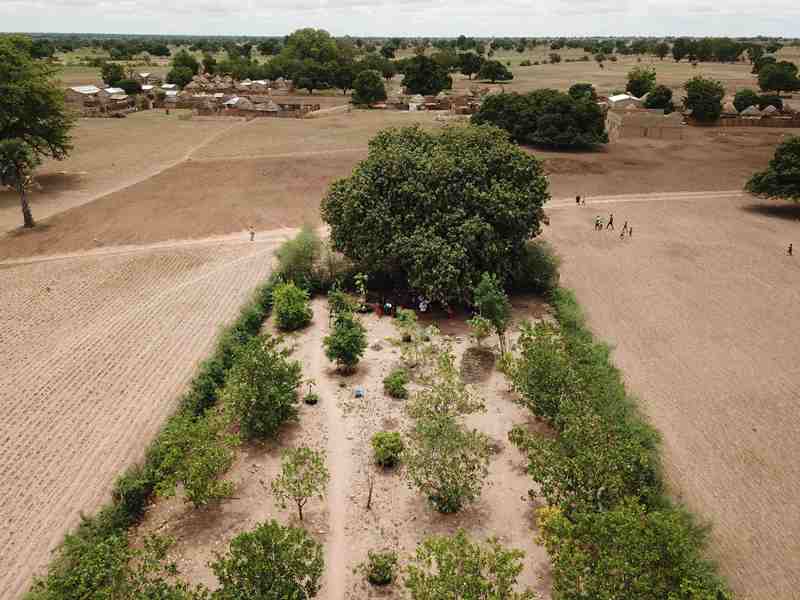Regenerative agroforestry nonprofit Trees for the Future launches 20 new projects across sub-Saharan Africa in their ongoing effort to end hunger, poverty, and deforestation through farmer education and the Forest Garden Approach.
More than 8,000 farmers are participating in the 20 projects spread across Cameroon, Senegal, Kenya, Tanzania, and Uganda – with 300-600 farming families in each project. Over the next four years, these farmers will learn how to establish Forest Gardens on their own land to improve their soil health and biodiversity; grow diverse, nutrient-rich crops; increase their income; adapt to climate change, and break the cycles of hunger and poverty.
“Many of the farmers in these new projects live close to existing projects. They’ve seen their neighbors’ successes and want to have the opportunity to achieve the same,” says TREES Director of Programs Brandy Lellou. “Like most farmers around the world, these farmers have farmed one way for generations – using monocrop intensification. But with the Forest Garden Approach, farmers learn to diversify crops, restore soils, and maximize the full potential of their land.”

Trees for the Future’s in-country field staff will spend the next four years training program participants in everything from land management to market economics. Farmers regularly see their nutrition and income begin to improve within the first one to two years and by the end of the fourth year, a one acre Forest Garden is typically home to about 2,500 trees.
“We’re really excited to see the inevitable successes that these farming families will have and we would not be able to do it without our dedicated community of supporters,” Lellou says. “Last year, we received a record amount of funding from our individual donors, brand sponsors, and institutional partners and we want to say thank you to every single one of you for making it possible.”
COVID-19 has affected the typical mobilization process for staff and participating farmers, but Trees for the Future field staff are still able to communicate with farming groups virtually and provide guidance, insight, and resources.
“It’s certainly a challenge having to onboard and train more than 8,000 people during a global pandemic, but these farmers are living in hunger and poverty right now. They are the most vulnerable to a global crisis like this,” says Lellou. “Fortunately, planting materials had already been delivered to farmers who need to start nurseries this spring. As for training, we’ve met the challenge head on. Our training teams have developed new, creative ways to train farmers virtually. Once restrictions are lifted, we plan to go back to in person training and review anything that farmers may have missed.”
See the organization’s official response to COVID-19 here. To see the details of each Trees for the Future project, visit trees.org/wherewework.
